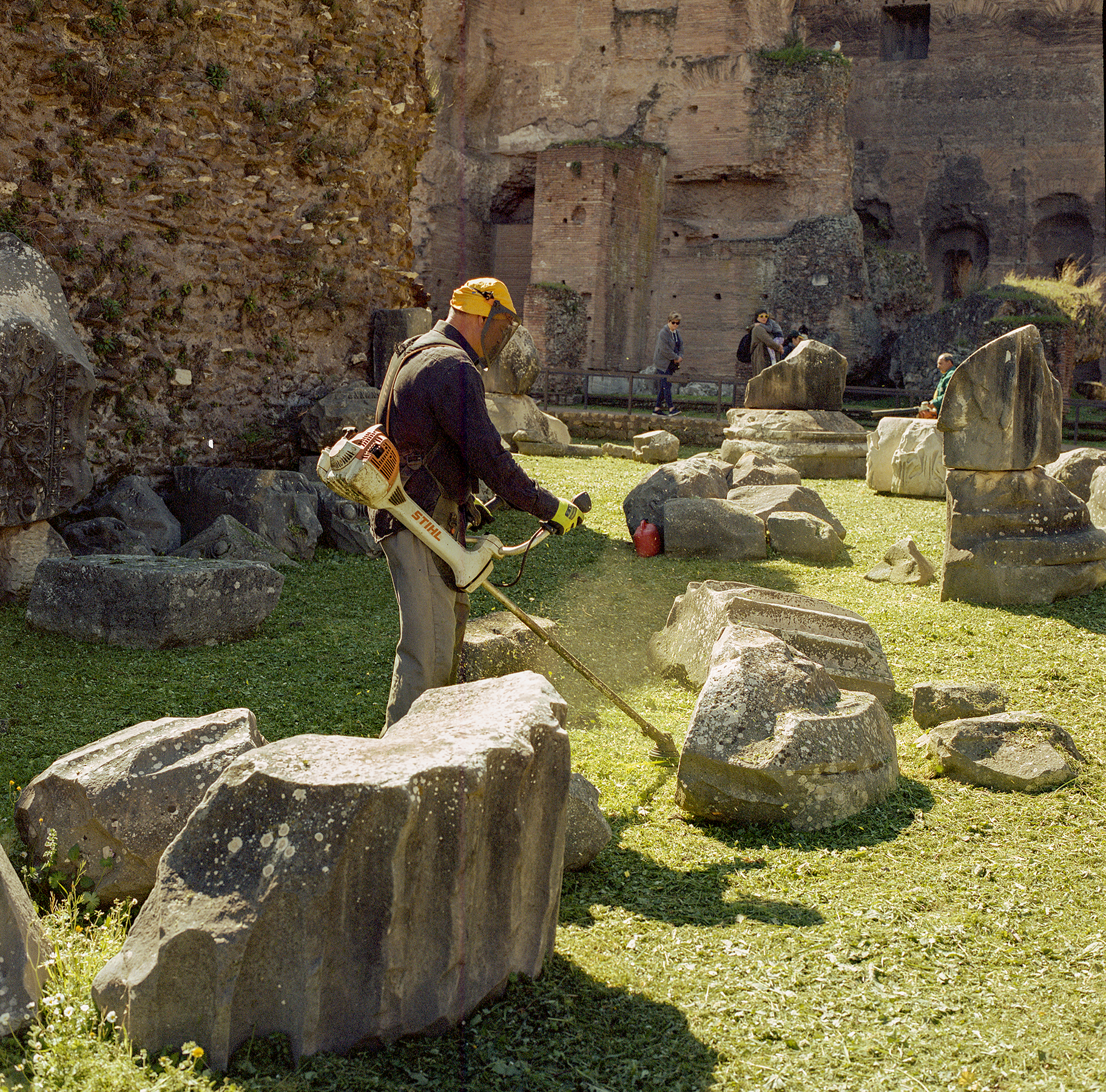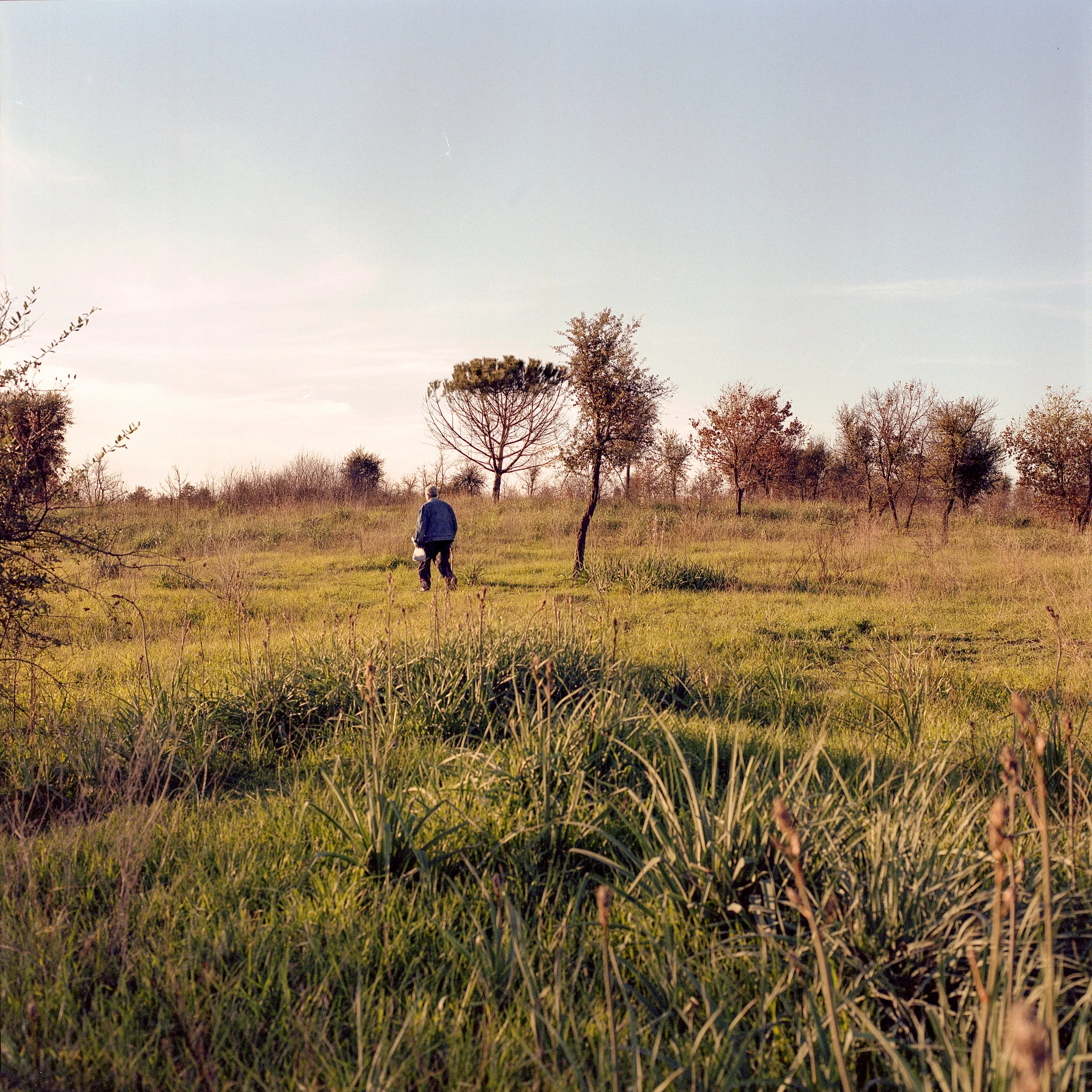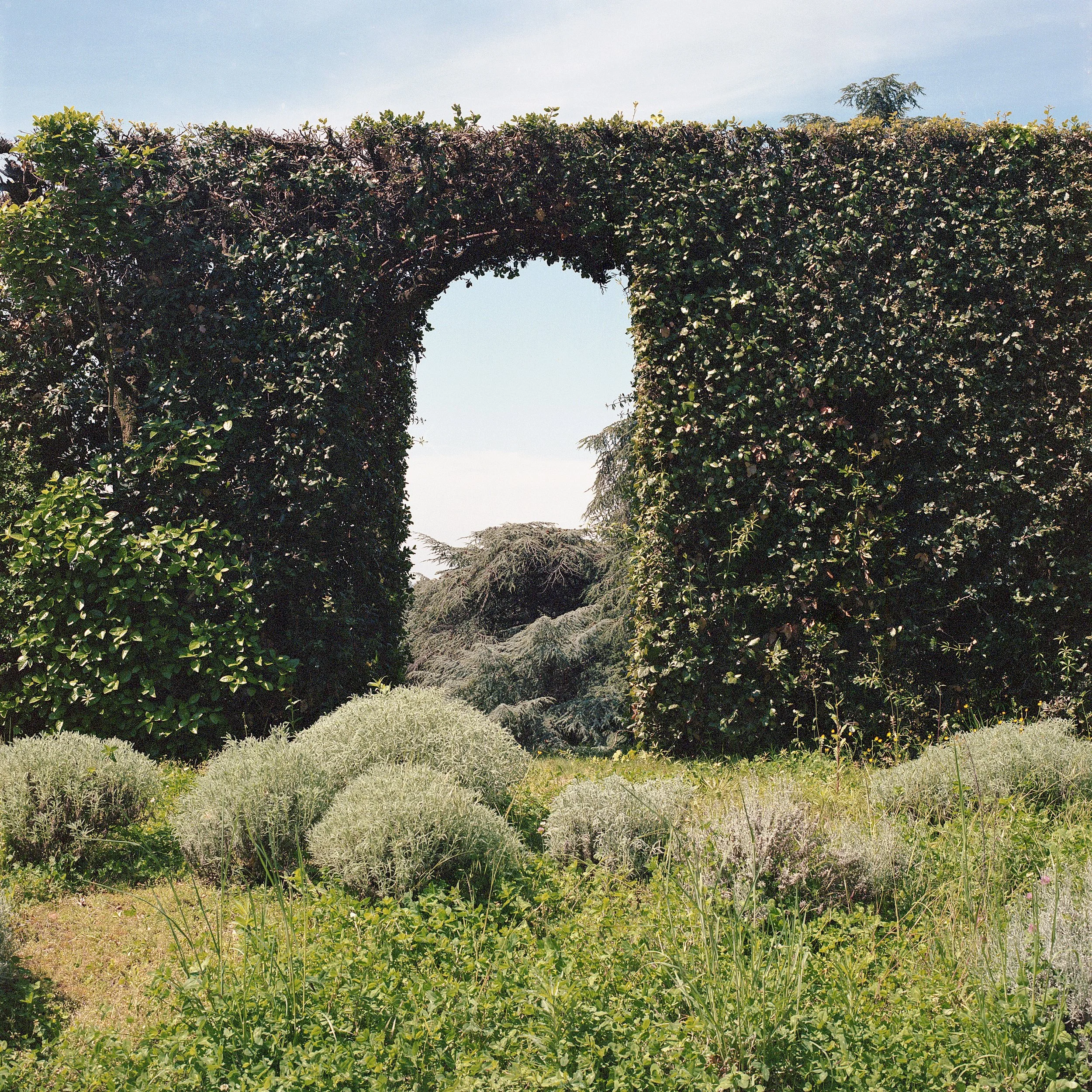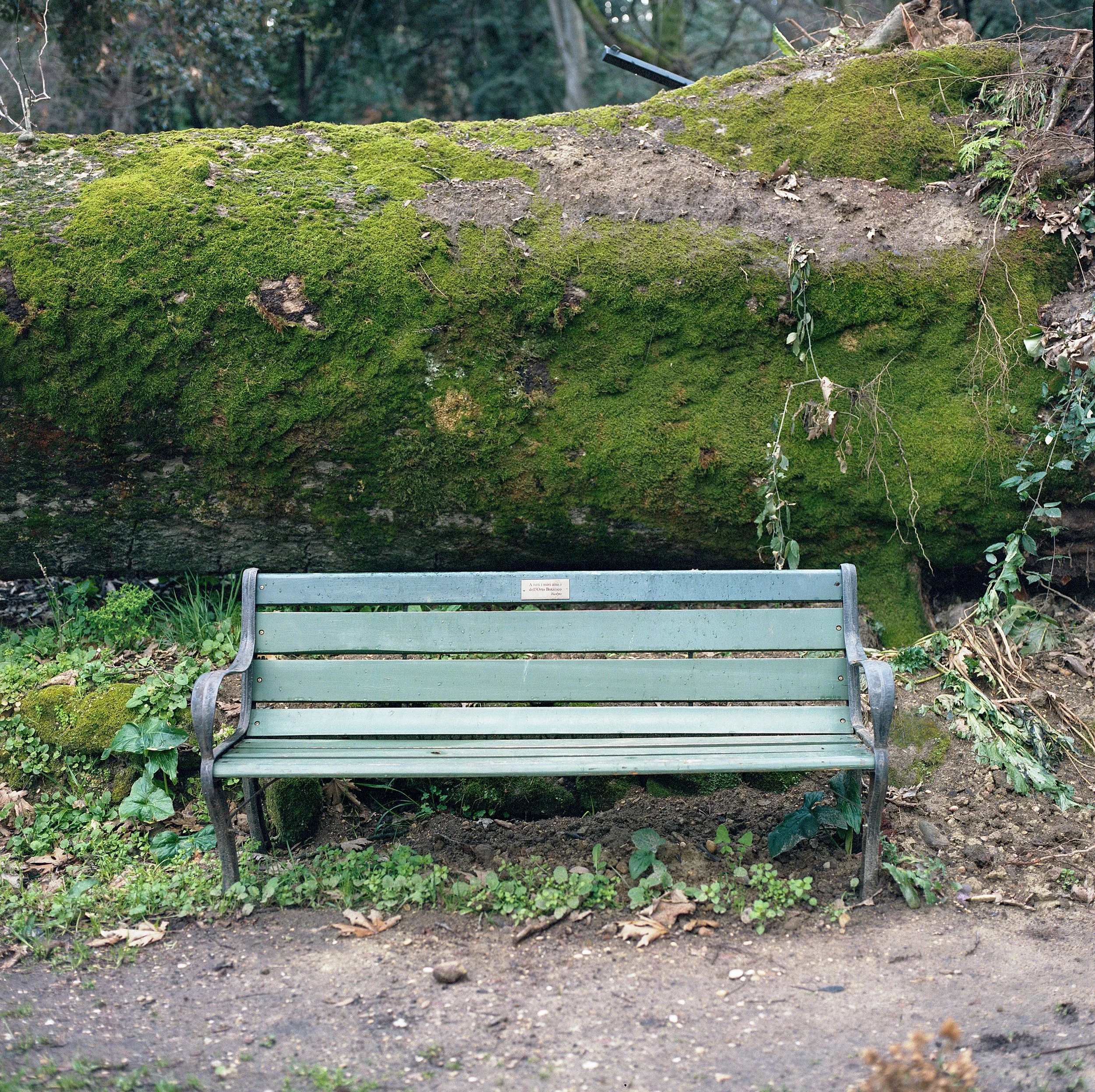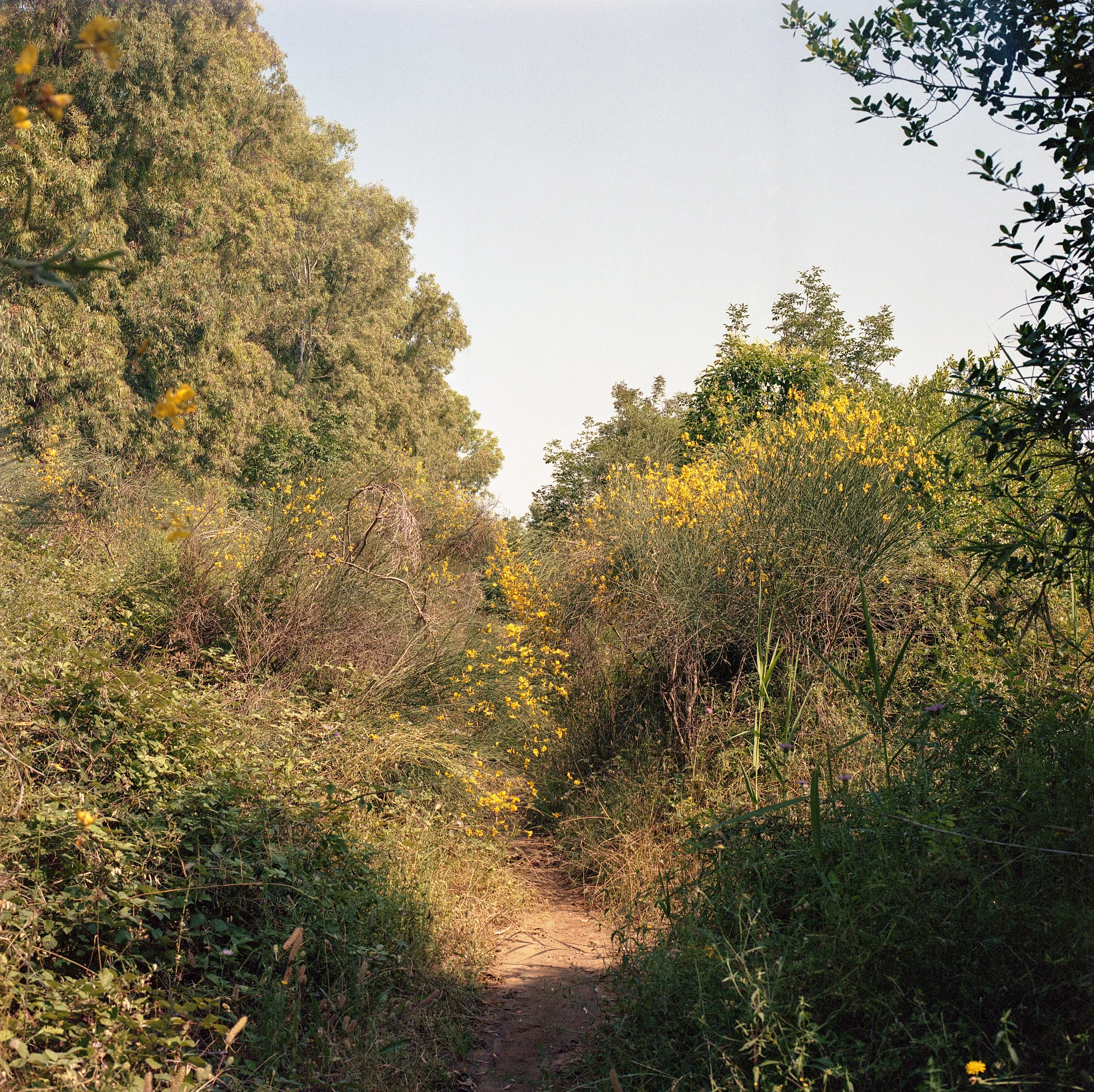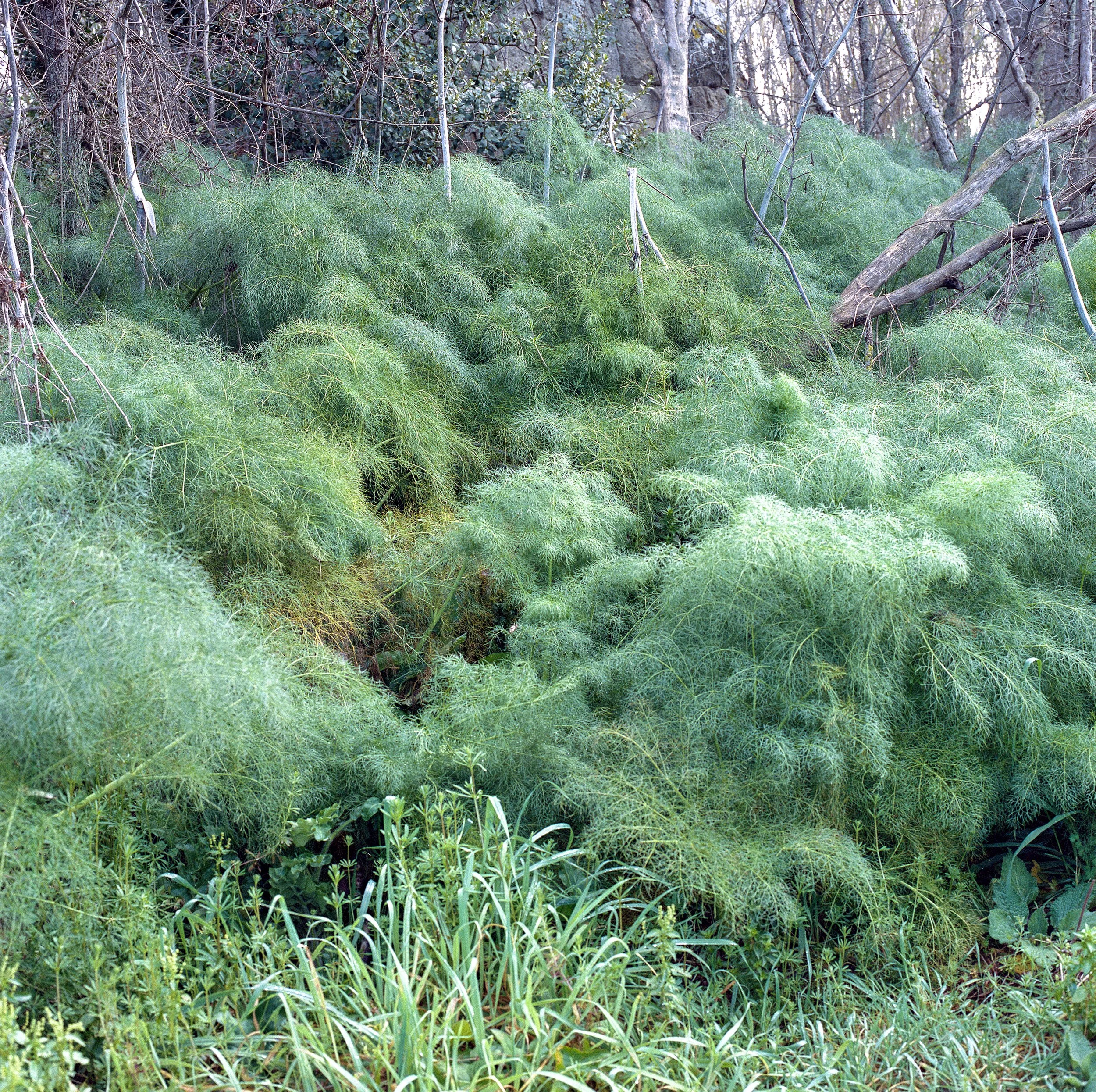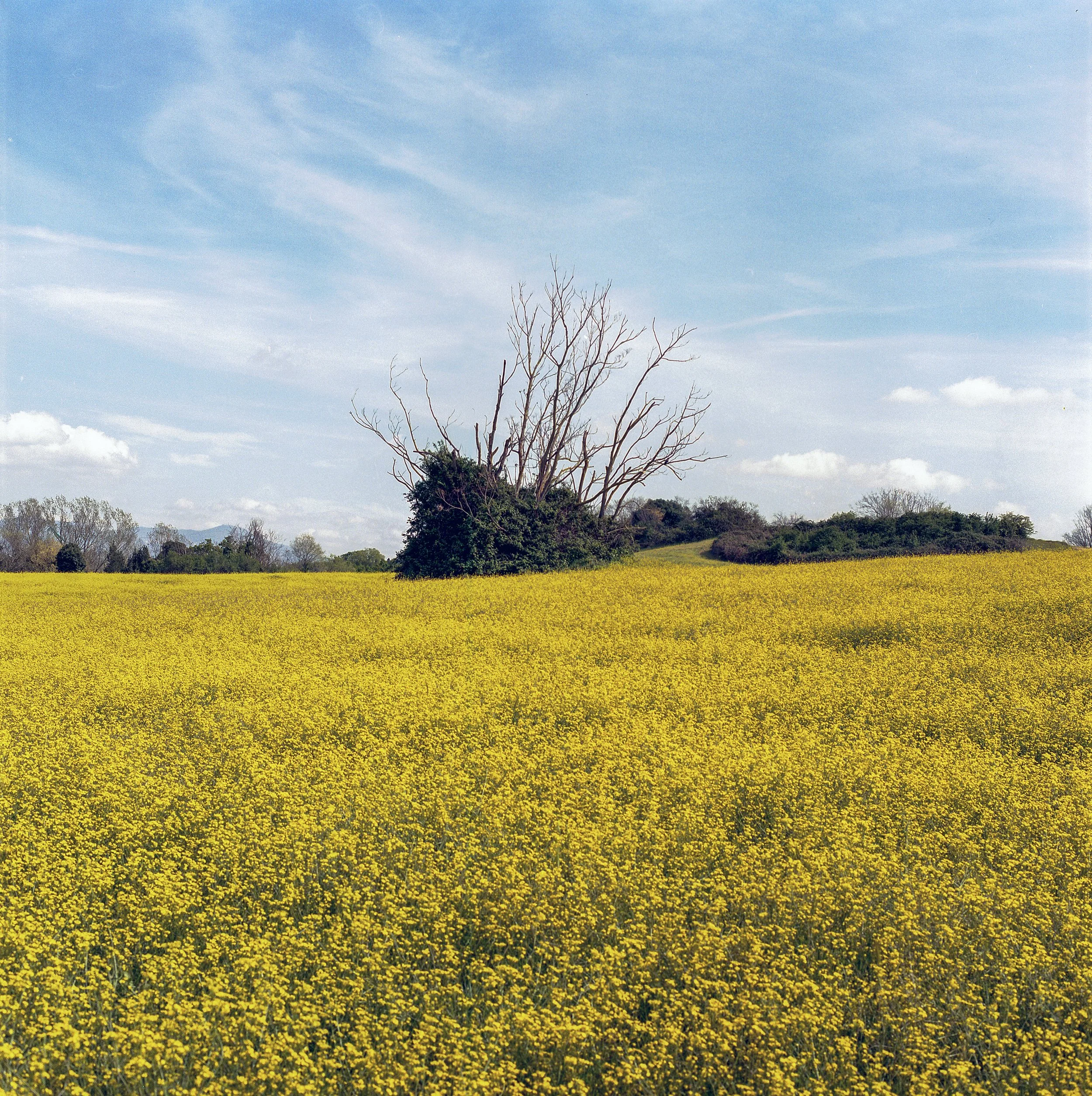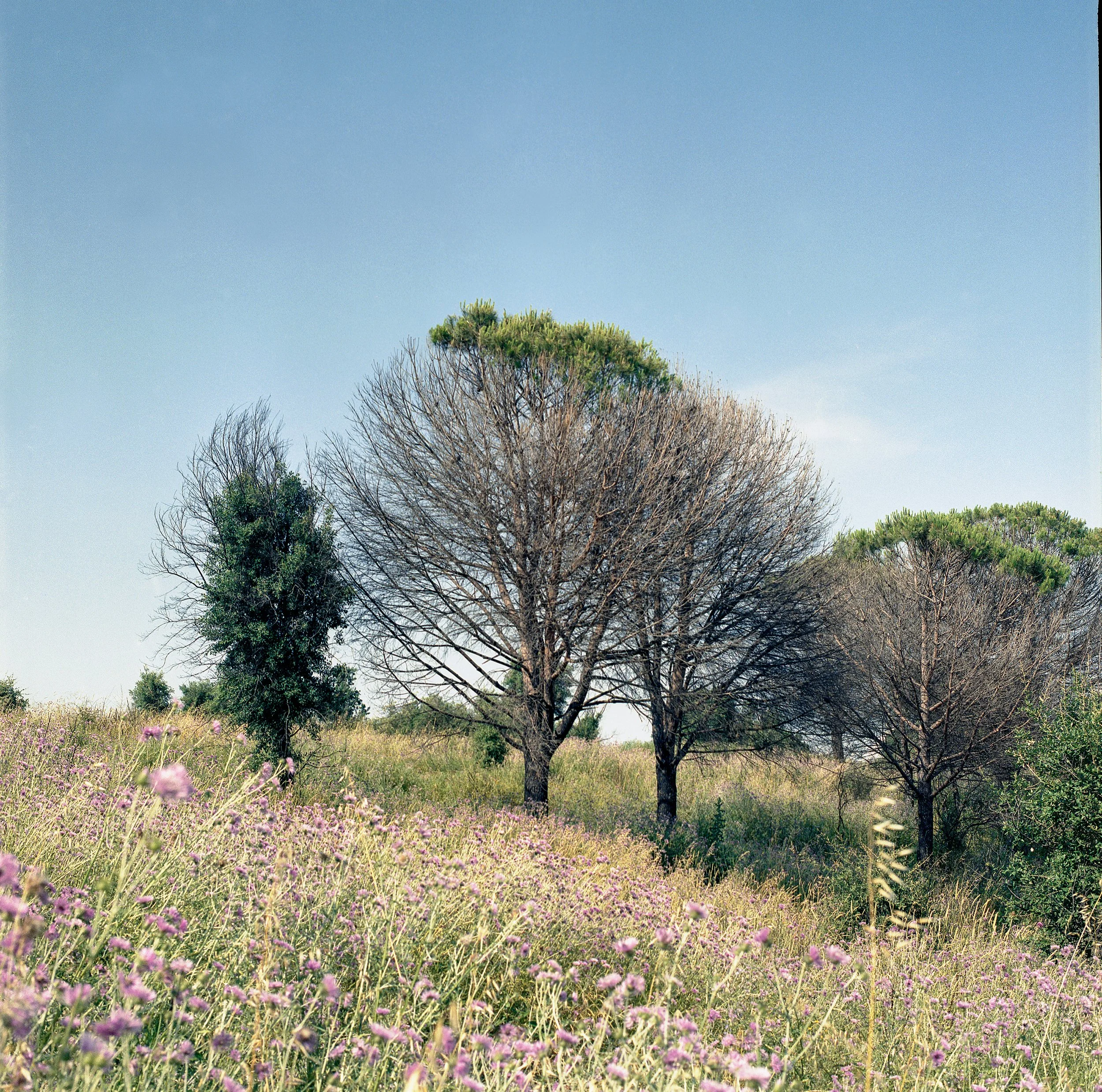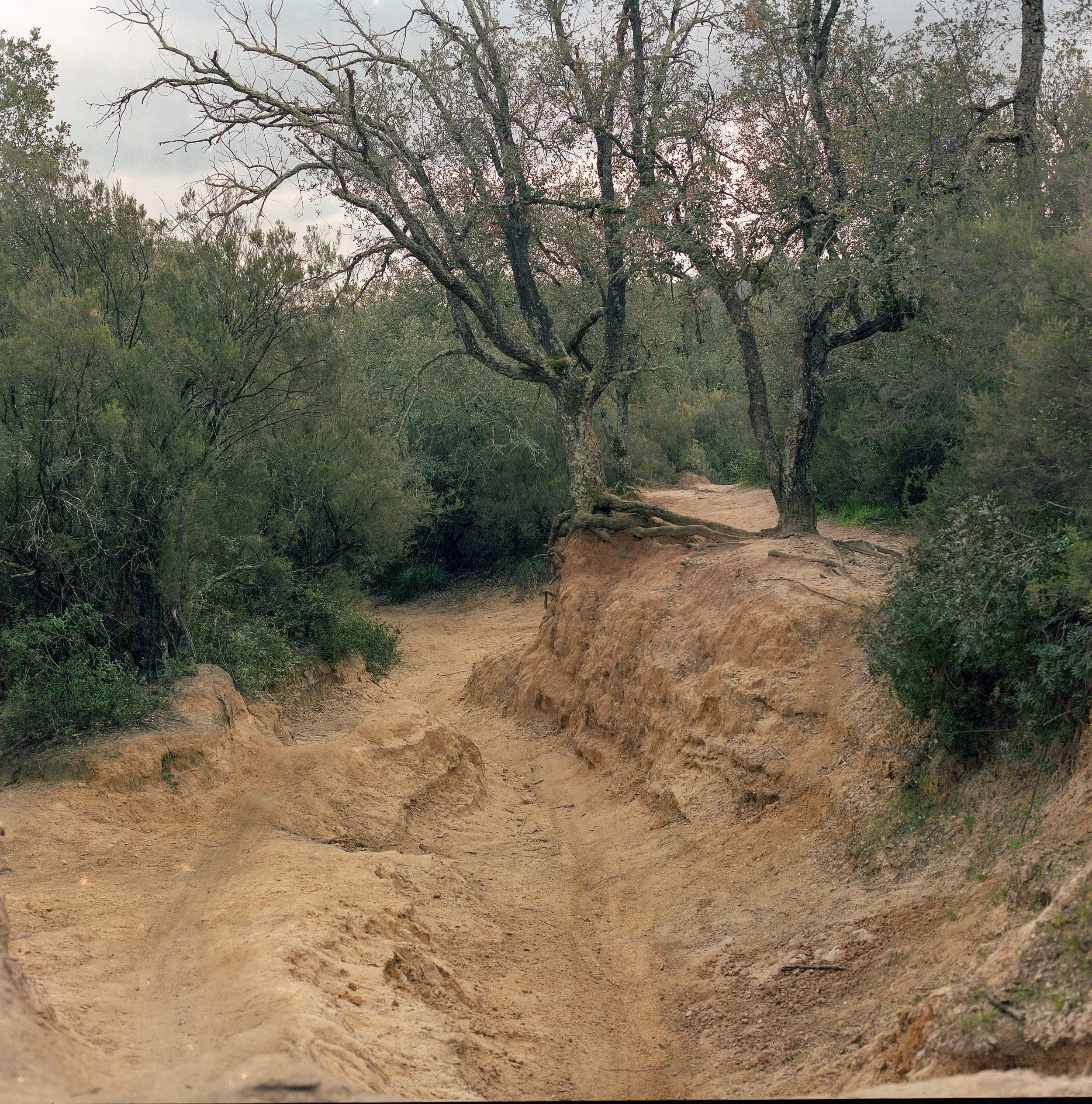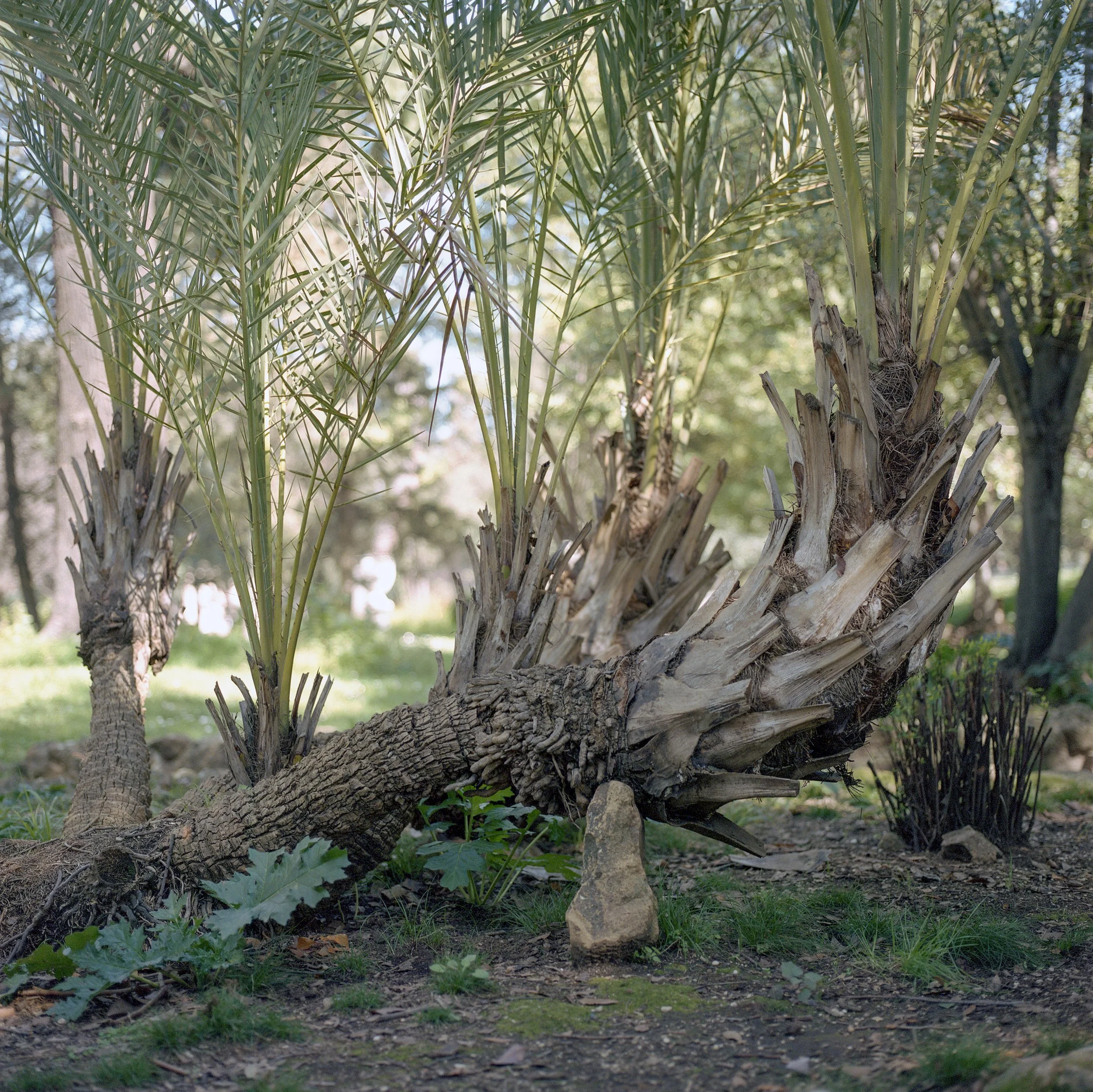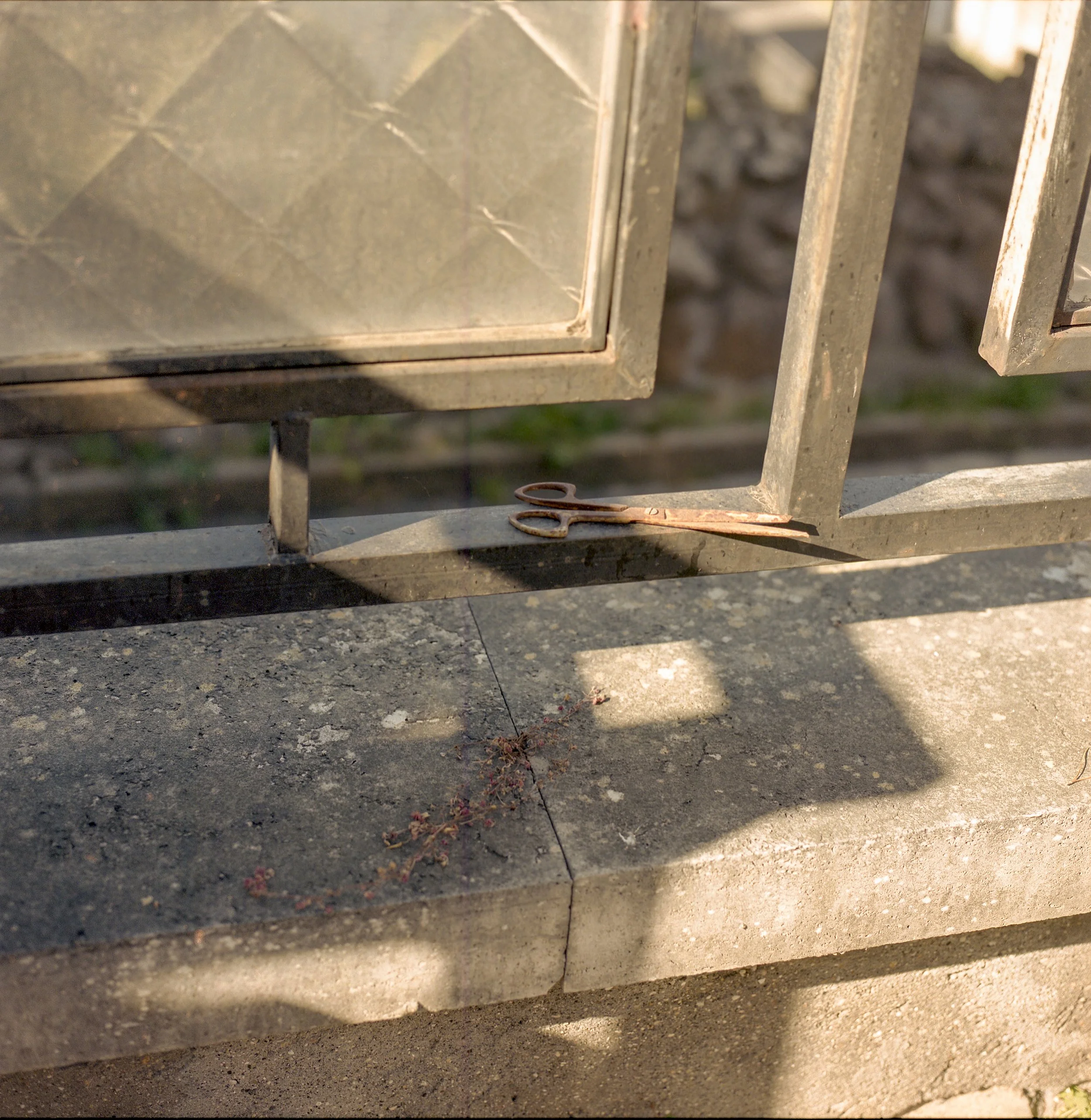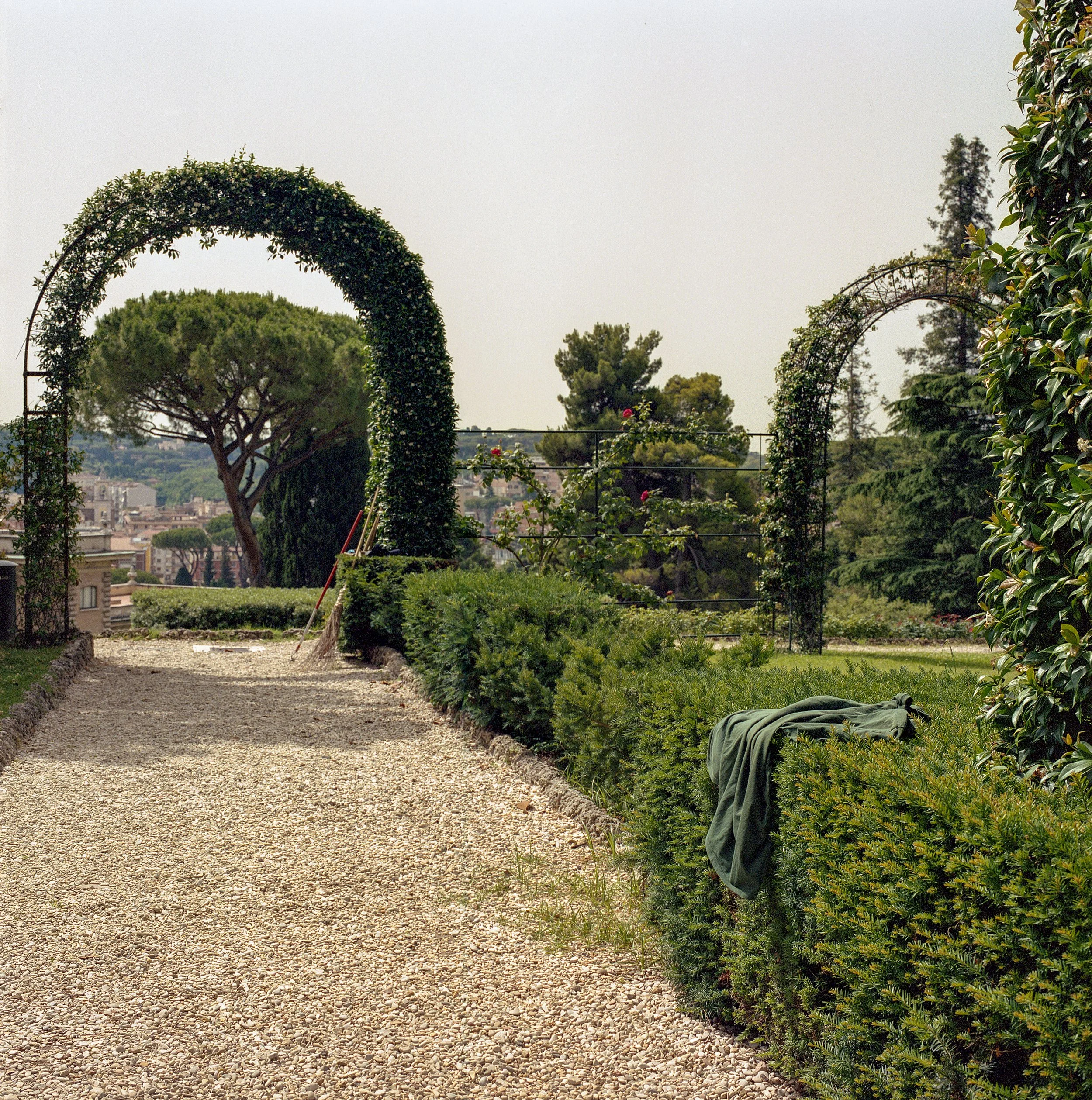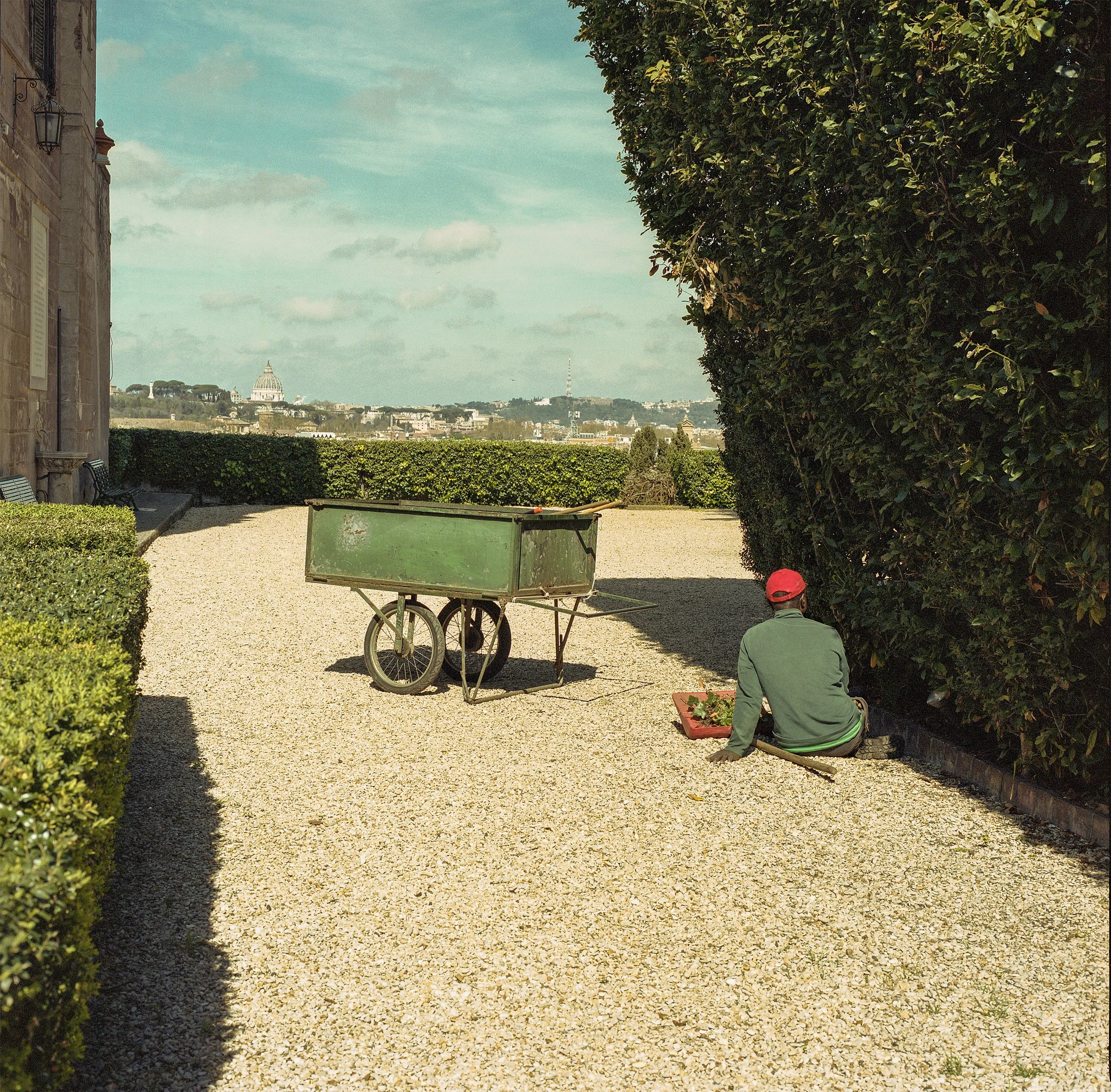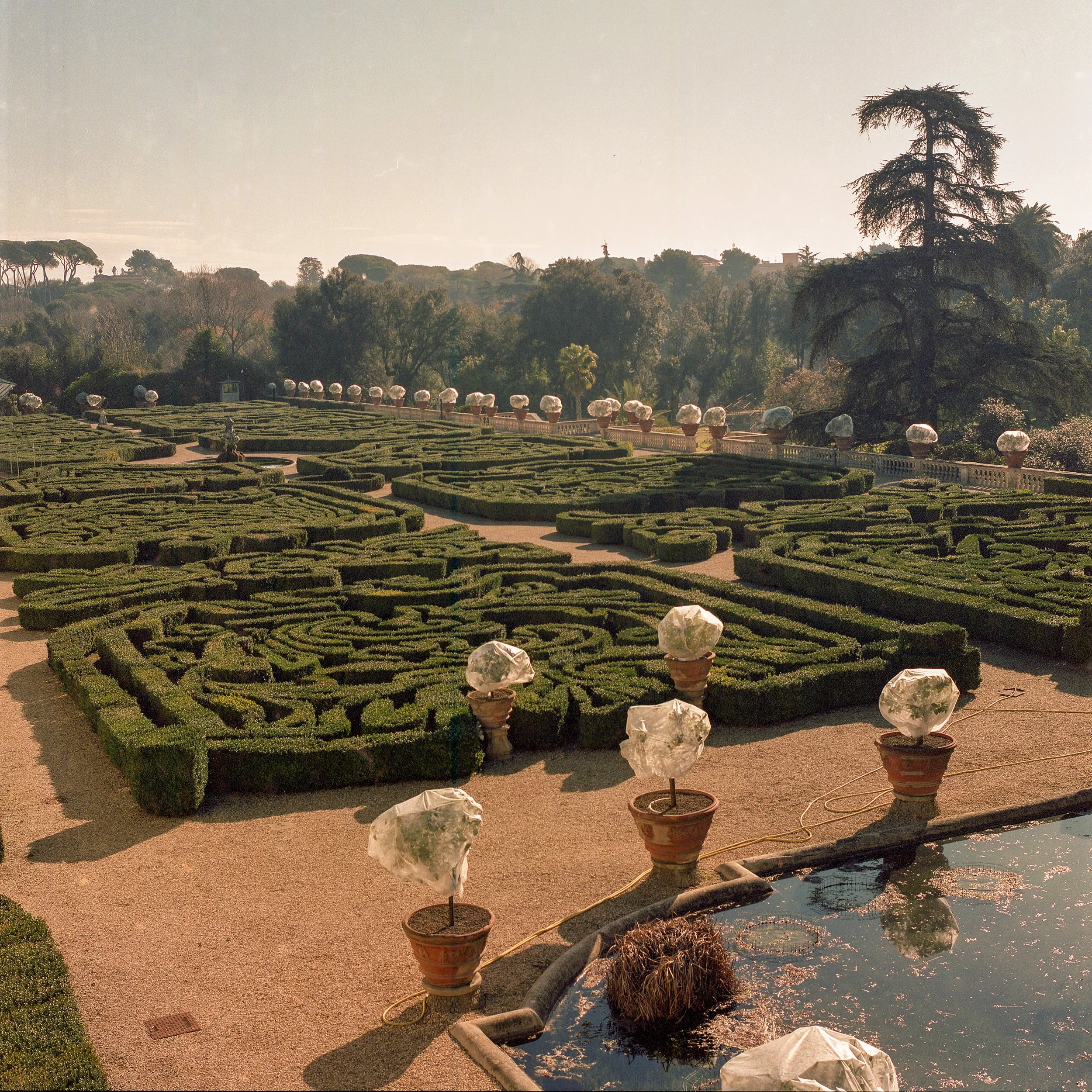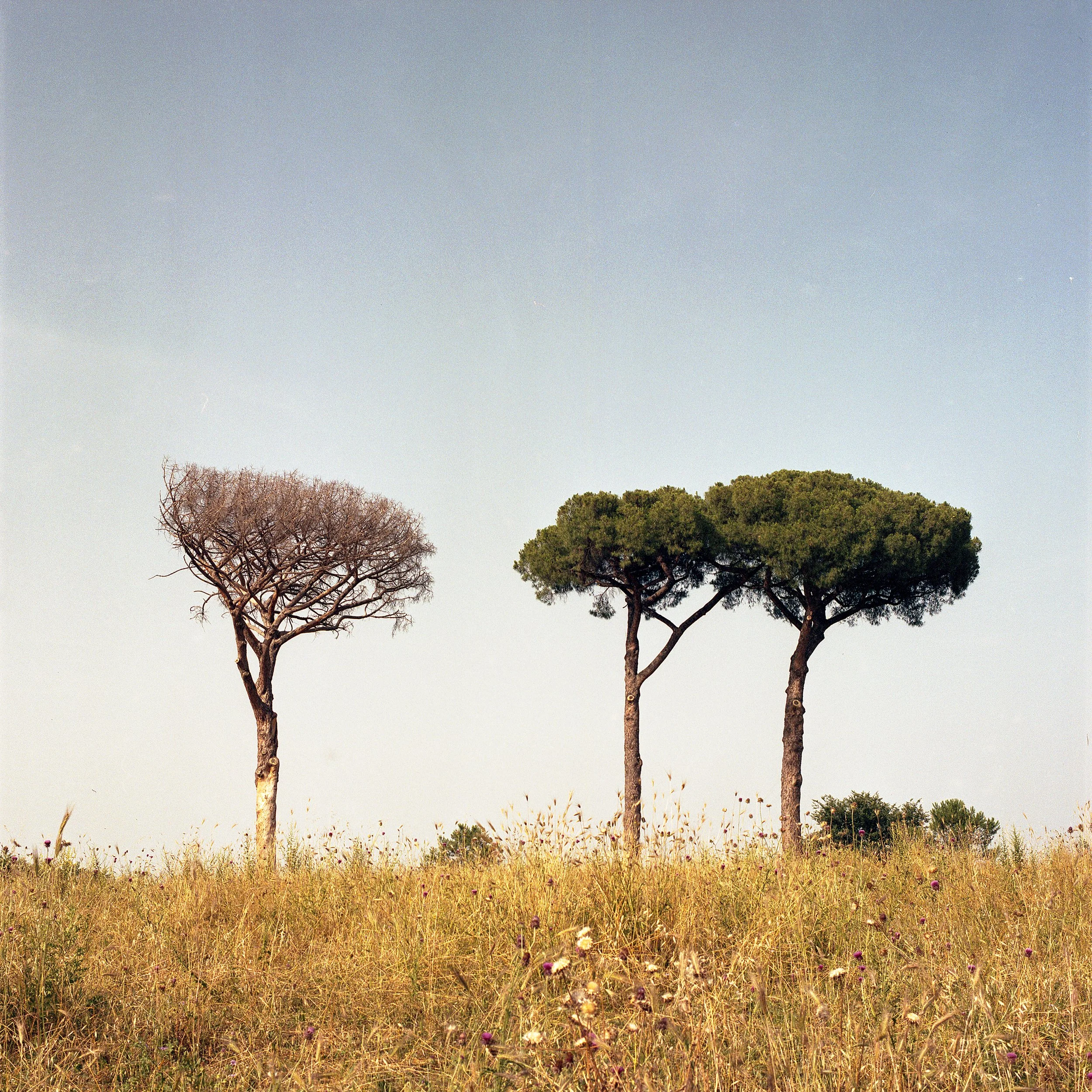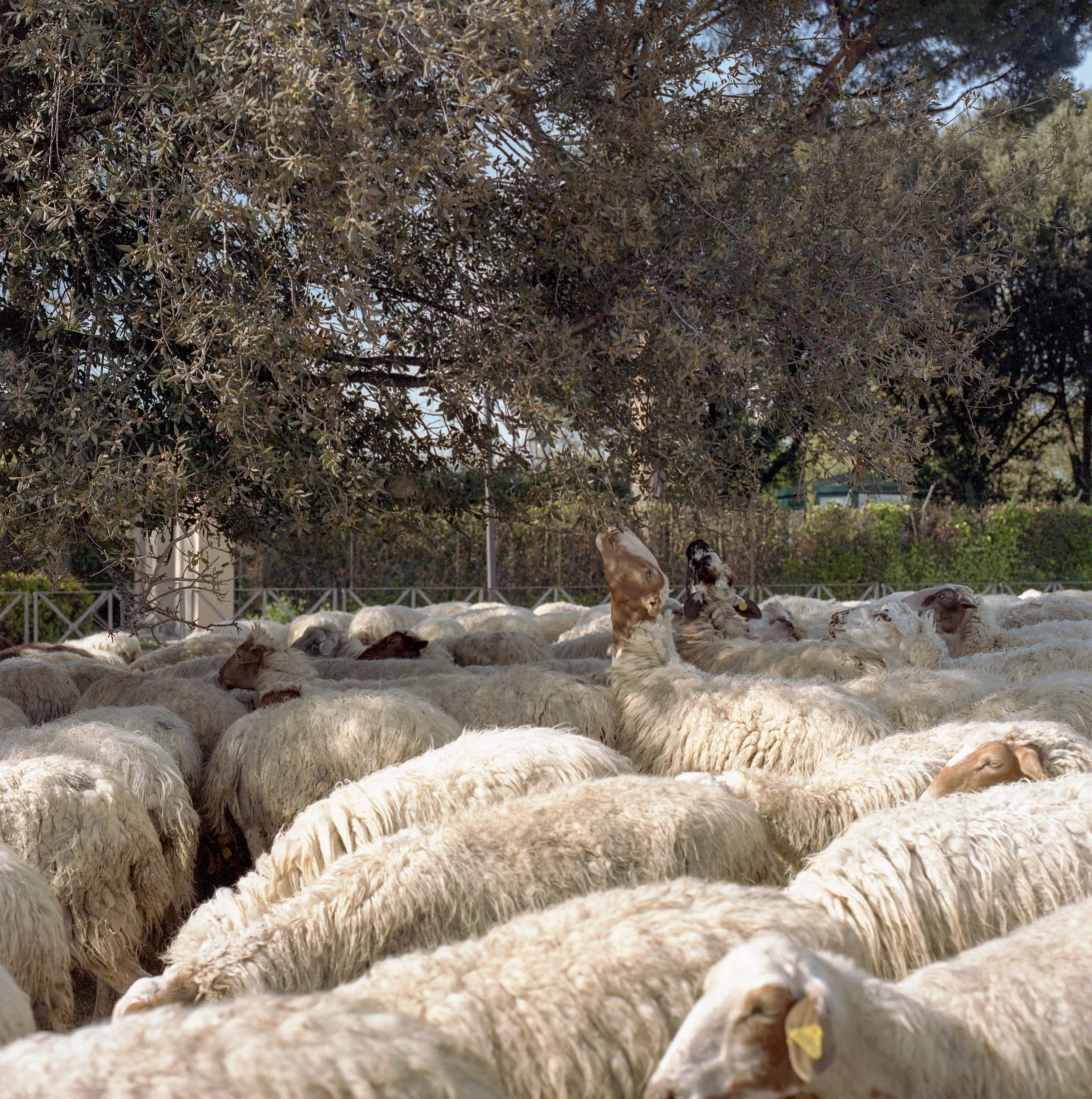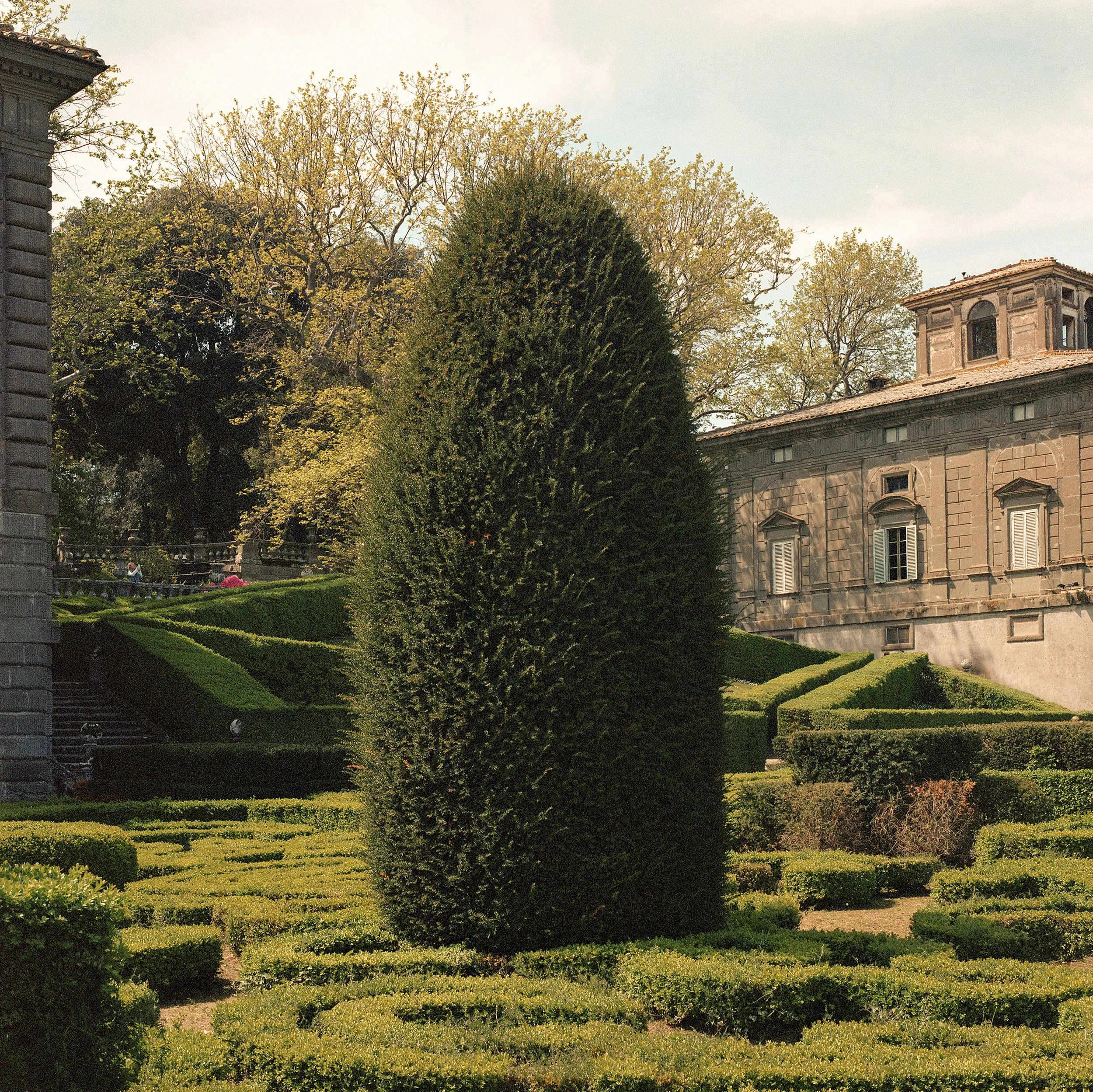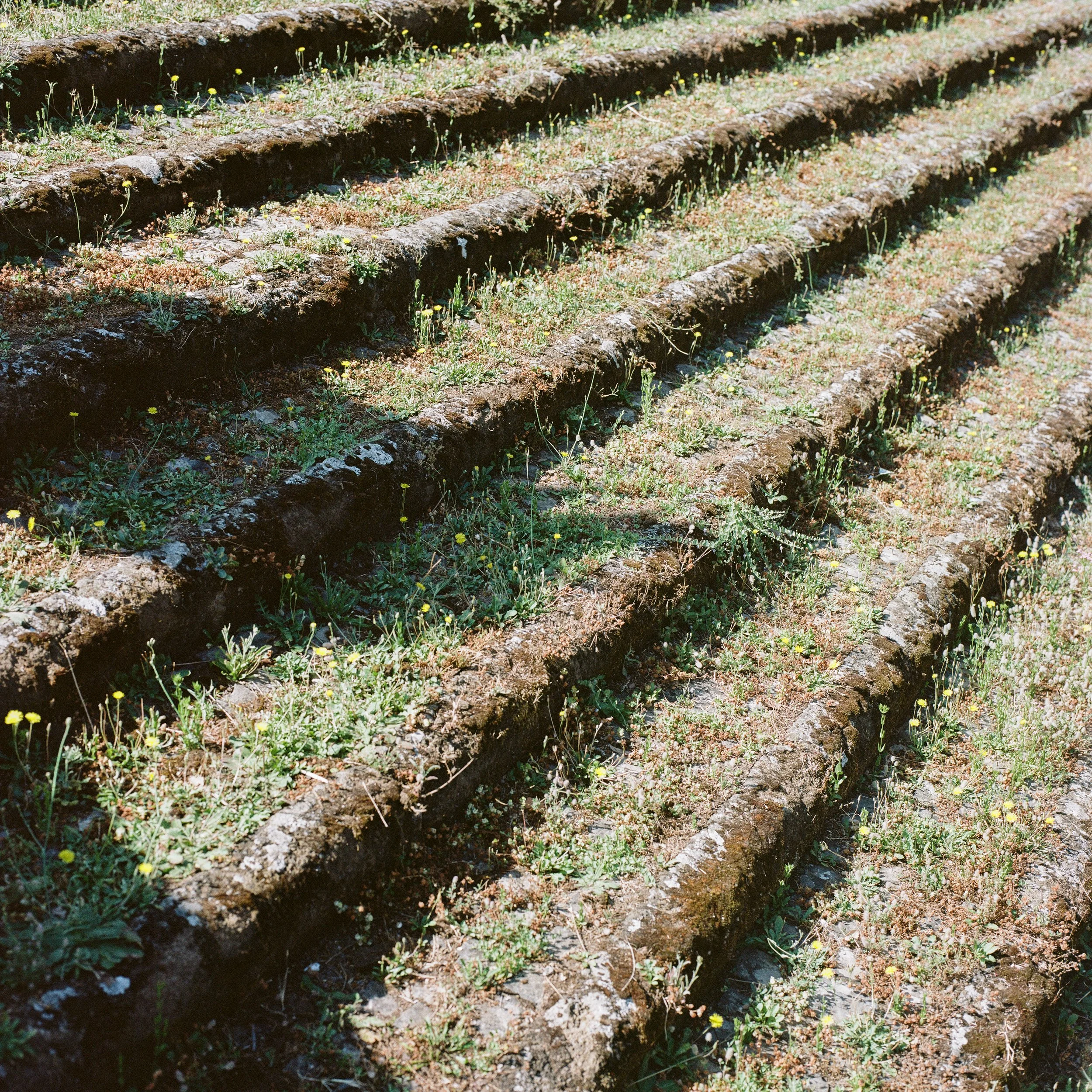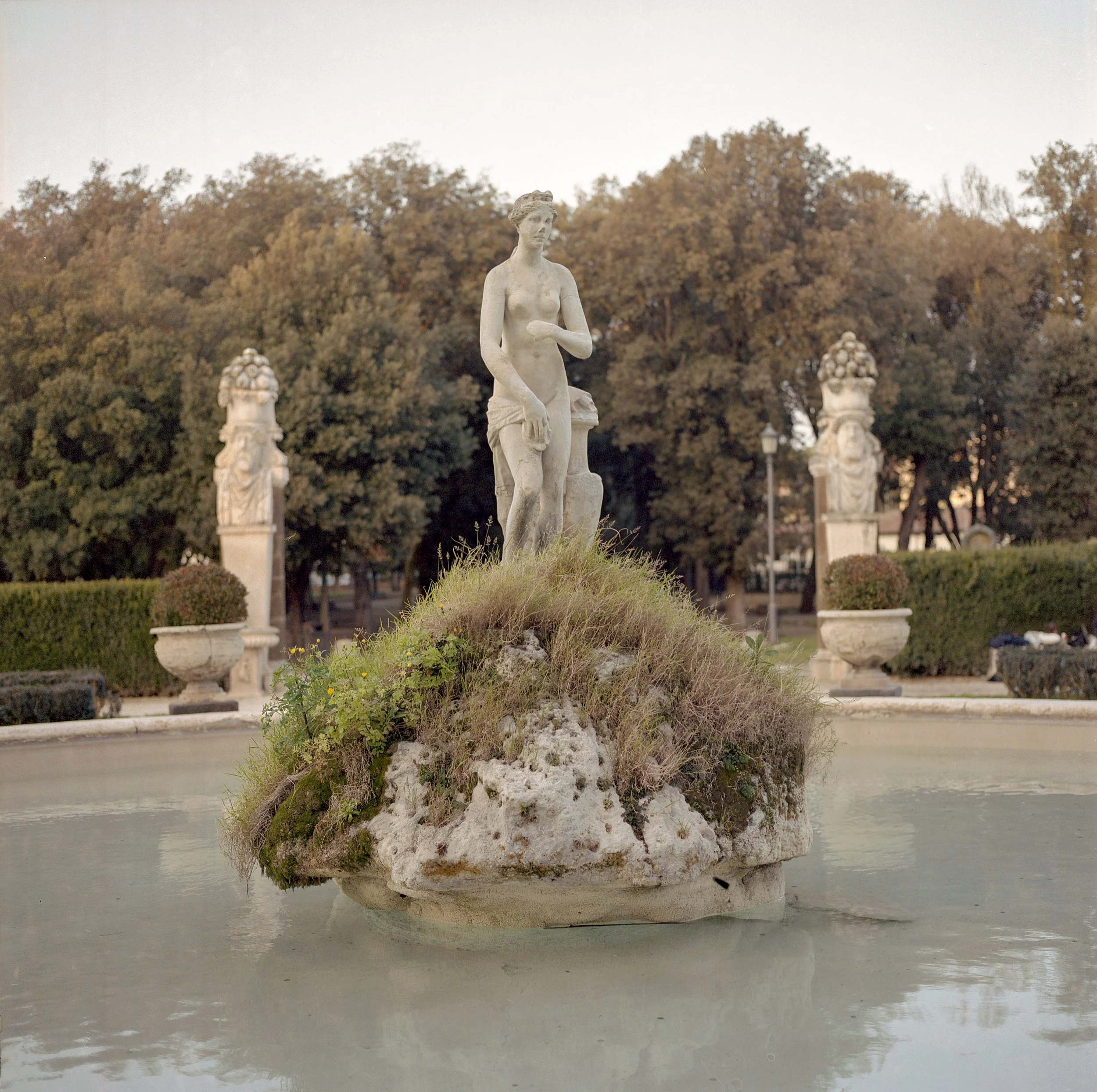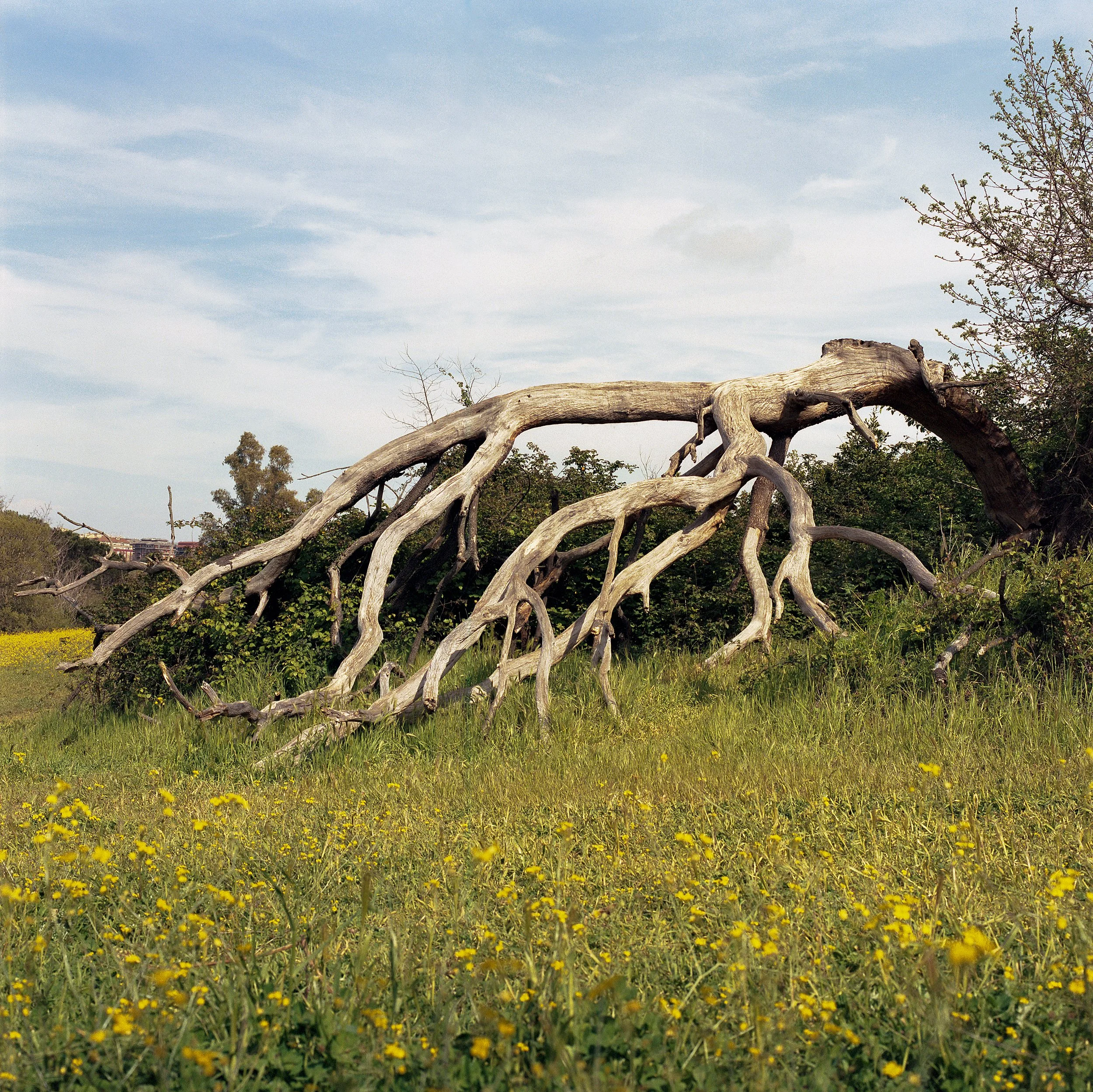TAKING CARE OF ROME
TAKING CARE OF ROME
A self-sown Calendula in a gravel path.
A Pinus pinea (stone pine) pruned so the wind “moves around it, opening and closing.”
A municipal crew string trimming around ancient marble fragments.
An octogenarian foraging for asparagus “per il mi risotto.”
These are acts of care that render a collective landscape aesthetic: a Roman aesthetic of care. Taking Care of Rome is a study of the care practices—from those of everyday Romans to professional gardeners—that are integral to Rome’s 21st century landscape identity.
A Quercus ilex (holm oak) sculpted into the shape of a Roman aqueduct at Villa Pontificia.
A colossal Platanus x hispanica (London planetree) left to decay behind a bench at Rome’s Orto Botanico.
Overgrown Spartium junceum (Spanish broom) consuming a park path at Riserva naturale dell'Insugherata.
While many acts of care are aesthetically motivated (topiary, mowing), others stem from environmental policies that nonetheless have radical aesthetic implications, like leaving fallen deadwood in public landscapes. Still other care aesthetics arise from economic circumstance, like spontaneous vegetation that crowds paths at marginal city parks and obscures lesser ruins.
A giant, cloud-like Foeniculum vulgare (common fennel) grows at the base of Aqua Claudia.
A riot of Diplotaxis tenuifolia (perennial wall-rocket) blankets a field at Parco della Caffarella.
A spontaneous Agave americana (aloe plant) spills over the edges of the scaffolded cage in Parco degli Acquedotti.
A Quercus suber (cork oak) with a crown of green foliage after wildfires at Parco del Pineto.
Taking Care of Rome is a study of the value systems that shape Roman landscapes: what is worth nurturing or protecting? How much neglect is permissible, and where? When does a neglected landscape become a rewilded landscape and begin to accrue the benefits of spontaneous naturalization, like increased biodiversity and carbon sequestration?
A sandy hilltop canyon formed by the repetitive force of mountain bikers.
A Phoenix dactylifera (date palm) supported by a rock in Villa Celimontana.
Rusting scissors on a terrace at Cimetero del Verano (Verano Cemetery).
TCOR reveals the civilian labor that exercises agency in underfunded urban landscapes—from foragers that collect plants and manage their populations, to mountain bikers that alter public pathways, to the citizen gardener placing a supportive rock under a date palm in Villa Celimontana and the cemetery visitor weeding a loved one’s plot.
A laborer’s shirt is tossed onto a hedge in the Giardini Vaticani (Vatican City Gardens).
A gardener pulls Hederea helix (English ivy) from the base of the iconic “keyhole” arbor at Villa Magistrale.
A worker leans his tool against a boxwood topiary in the immense grounds of Villa Pontificia.
A lawnmower clips the lawn around a baroque par terre at the papal gardens; behind, Pinus pinea are strung together with reinforcing cables.
Potted citrus wrapped in protective sheets are illuminated at dusk in the gardens at Villa Doria Pamphili.
TCOR celebrates the often invisible labor behind Rome’s baroque gardens and villa landscapes—the men and women shaping topiaries, stabilizing centuries-old trees in renaissance gardens, cloaking tender fruit trees to protect them from the frost and weeding just beyond the frame of the tourist’s photograph.
One dead and two surviving Pinus pinea line an allée at Parco degli Acquedotti.
A decimated bosque of Pinus pinea at Villa Doria Pamphili.
Towering Pinus pinea line the pineta sacchetti that give Parco del Pineto its name. In foreground, a sapling stands in place of a lost tree.
The climbing ropes of Roman arborists sway in twilit shadows beneath a stone pine at Villa Aurelia.
TCOR reflects on the iconic Pinus pinea, or stone pine, a species in the midst of an arboreal epidemic due to an invasive pest, and asks: should the city continue to replace these trees when 50% of newly planted saplings are lost? Or is this the start of Rome being defined in a new way, by a new species? What do you do when cultural preservation involves the perpetuation of something living, and thus vulnerable?
Sheep enjoy the shade of a Quercus ilex (holm oak) in Parco della Caffarella, rubbing against its bark and eating twigs off its lower branches.
Cypress topiaries grow shaggy “so they don’t suffer so much” at Villa Lante in Bagnaia.
Stone steps grow thick with vegetation at Villa Torlonia in Frascati.
Grasses, mosses, and thistle sprout from the textured, naturalistic base of the Fontana di Venere (Fountain of Venus) outside Villa Borghese.
A fallen tree is left to weather in Parco della Caffarella.
A tomato plant sprouts from the gutter of the tool-shed behind the American Academy in Rome’s Bass Garden and bears fruit.
This work was completed as the 2023 Gilmore D. Clark and Michael I. Rapuano/Kate Lancaster Brewster Rome Prize Fellow in Landscape Architecture with the generous support of the American Academy in Rome.


